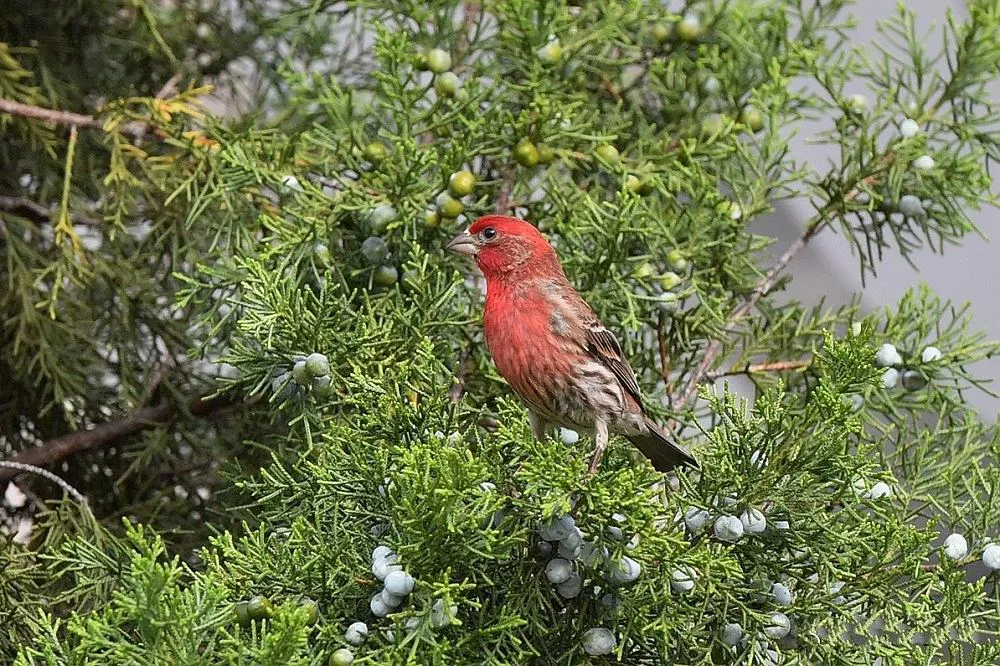The house finch (Haemorhous mexicanus) is a small, colorful bird that is native to North America. One of the interesting things about this species is the color variation of its eggs. In this article, we will explore the different colors of house finch eggs and what factors influence their pigmentation.
House Finch Eggs: A Palette of Colors:
House Finch eggs are known for their diverse range of colors, which can vary from pale blue to deep turquoise, and even occasionally appear with a greenish hue. The coloration of their eggs often exhibits slight variations within a clutch but remains relatively consistent for a particular individual. These vibrant shades make House Finch eggs distinct from those of many other bird species, which typically lay eggs in shades of white or pale blue.
Causes of Color Variation:
The primary reason behind the varied coloration of House Finch eggs lies in their unique pigmentation process. Pigmentation in bird eggs is primarily a result of two pigments: biliverdin and protoporphyrin. The deposition of these pigments occurs during egg formation in the oviduct. The concentration and interaction of these pigments give rise to the stunning colors observed in House Finch eggs.
Genetic Factors:
Genetics play a vital role in determining the color of House Finch eggs. Research suggests that the pigmentation genes responsible for egg coloration are heritable. Certain variations in these genes can influence the color production and deposition process, resulting in different colors within and between individual House Finch clutches. It is worth noting that the coloration of the eggs is not influenced by the color of the parents’ plumage.
Environmental Factors:
While genetics form the foundation for egg coloration, environmental factors can also influence the intensity and variation in color. Studies have indicated that factors such as diet, ambient temperature, and the availability of certain nutrients can impact the coloration process. For instance, a diet rich in carotenoid pigments, found in various fruits and vegetables, can enhance the intensity of color in House Finch eggs.
Significance and Evolutionary Implications:
The colorful eggs of House Finches serve multiple purposes that contribute to the species’ reproductive success. The vibrant hues may serve as visual signals to potential mates, indicating the female’s health and genetic quality. They may also play a role in nest recognition and individual egg recognition, allowing House Finches to identify and defend their own eggs from intruders or parasitic species.
Furthermore, the color variations in House Finch eggs may serve as a protective mechanism against brood parasitism. By laying eggs with unique colors, House Finches may make it more challenging for parasitic birds, such as the Brown-headed Cowbird, to mimic their eggs successfully. This defense strategy helps to ensure that House Finches invest their parental resources in their own offspring.
Conclusion:
The House Finch, with its charming appearance and delightful song, has captivated the hearts of many bird enthusiasts. Its colorful eggs add another layer of intrigue to this species. The diverse range of colors observed in House Finch eggs is influenced by a combination of genetic and environmental factors, resulting in variations within and between clutches. The pigmentation process and coloration of House Finch eggs provide valuable insights into avian reproductive strategies and the evolutionary arms race between parasites and their hosts. Further research into the genetics and ecology of egg coloration in House Finches promises to uncover more about these beautiful avian wonders.
Related topics:
- Pine Siskin vs House Finch: What is the Difference?
- How long do House Finches live?
- What does a female house finch look like?
- What does a male house finch look like?


 Facebook
Facebook  Instagram
Instagram  Youtube
Youtube 